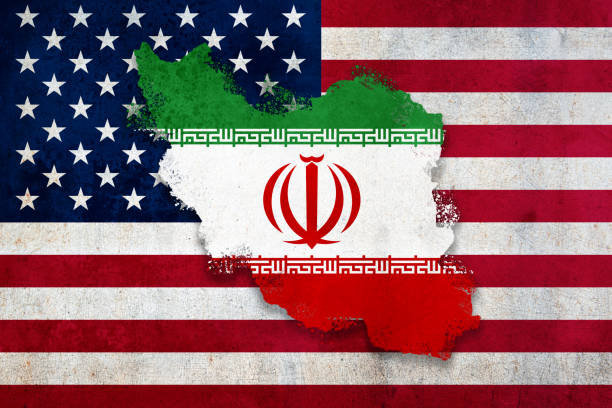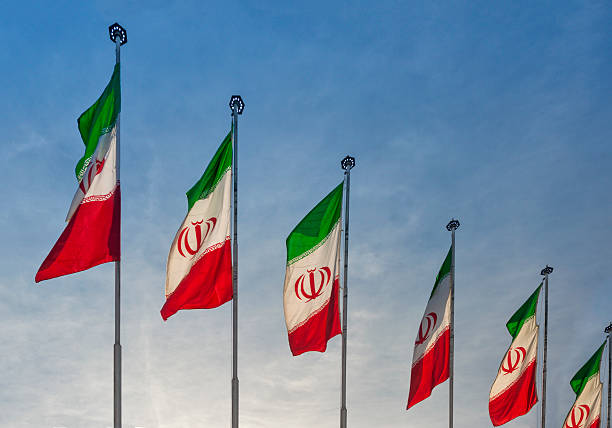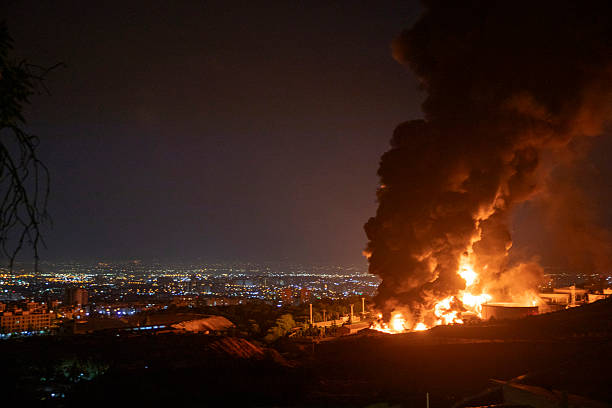U.S. Launches Strikes on Iranian Nuclear Sites in “Operation Midnight Hammer"
The U.S. launched a surprise strike on three Iranian nuclear sites in "Operation Midnight Hammer," severely damaging them while urging renewed diplomacy and denying intentions of war.
 Flag and country of Iran layered over the USA flag. With a weathered, textured graphic design edit. Diplomatic, conflict concept."n"n
Flag and country of Iran layered over the USA flag. With a weathered, textured graphic design edit. Diplomatic, conflict concept."n"nDefense Secretary Pete Hegseth announced Sunday that the United States “does not seek war” with Iran following a surprise overnight strike targeting three of the country's nuclear facilities. The operation, named “Operation Midnight Hammer,” was designed to disable Iran’s nuclear program and was executed without encountering Iranian resistance.
Vice President JD Vance, speaking on national television, said the strikes offered Iran a renewed opportunity to reengage diplomatically with Washington. The mission, according to Hegseth and Air Force Gen. Dan Caine, chairman of the Joint Chiefs of Staff, involved significant deception tactics and the use of decoys, allowing American aircraft to evade Iranian defenses.
“This mission was not and has not been about regime change,” Hegseth emphasized at a Pentagon news conference.
Gen. Caine confirmed that the operation targeted nuclear sites at Fordo, Natanz, and Isfahan. “Final battle damage will take some time, but initial battle damage assessments indicate that all three sites sustained extremely severe damage and destruction,” he said.
Vice President Vance declined to share detailed intelligence but expressed confidence in the mission’s success. “I think that we have really pushed their program back by a very long time,” he told NBC’s *Meet the Press*. “It’s going to be many, many years before the Iranians are able to develop a nuclear weapon.”
Vance stated that the U.S. had attempted to negotiate with Iran but determined the regime was not acting in “good faith.” He framed the operation as a strategic turning point. “I actually think it provides an opportunity to reset this relationship, reset these negotiations,” he said. “If \[Iran is] willing to do that, the United States is all ears.”
He added: “The Iranians can go down the path of peace or they can go down the path of this ridiculous brinkmanship of funding terrorism, of trying to build a nuclear weapon — and that’s just not something the United States can accept.”
The strikes come amid a broader conflict between Israel and Iran, which began on June 12 when Israel launched a series of attacks on Iranian nuclear facilities and senior military leaders. Iran responded with retaliatory strikes, heightening tensions across the region.
While U.S. officials stressed that only nuclear-related targets were hit, Iran condemned the U.S. action as a clear violation of its sovereignty and international law. Iranian Foreign Minister Abbas Araghchi said at a press conference in Turkey that the U.S. would be “fully responsible” for any consequences Tehran might pursue in response.
“They crossed a very big red line by attacking nuclear facilities,” Araghchi stated. “I don’t know how much room is left for diplomacy.”
Russia and China also condemned the U.S. strikes. Araghchi announced he would travel to Moscow later Sunday for talks with Russian President Vladimir Putin. Turkey issued a formal warning about the potential for the conflict to spread “to a global level.”
At the Pentagon briefing, officials provided few new details on Iran’s nuclear capabilities. Hegseth explained that the operation followed a strict timeline established by President Donald Trump. “Iran found out” that when Trump says there is a 60-day window for diplomacy, “he means 60 days of peace and negotiation,” Hegseth said. “Otherwise, that nuclear program... will not exist. He meant it.”
That assertion appeared to contrast with earlier statements from the White House suggesting Trump might wait up to two weeks before deciding whether to act militarily or continue diplomatic efforts.
The operation exploited the degraded state of Iran’s air defenses. “Iran’s fighters did not fly, and it appears that Iran’s surface-to-air missile systems did not see us throughout the mission,” Caine noted.
According to Hegseth, the U.S. used B-2 bombers that departed from Missouri earlier Saturday as part of a decoy strategy. In total, 14 bunker-buster bombs were dropped on the Fordo site. Additional deception techniques were employed, including deploying fighter aircraft to shield the bombers.
The strikes occurred between 6:40 p.m. and 7:05 p.m. Washington time, corresponding to approximately 2:10 a.m. Sunday in Iran.




.jpg)


Conversation